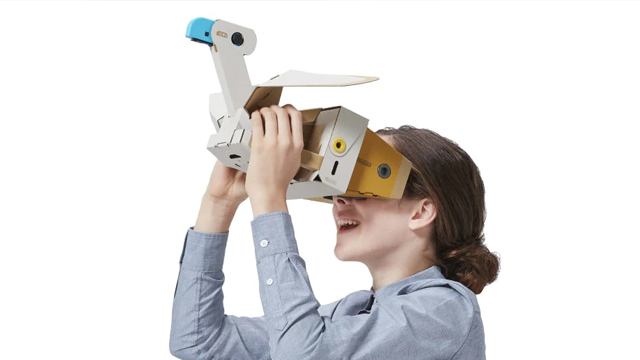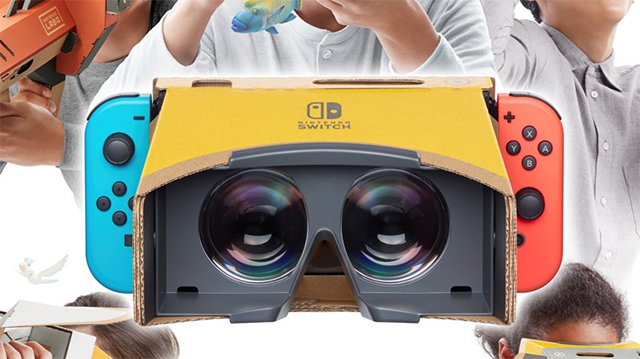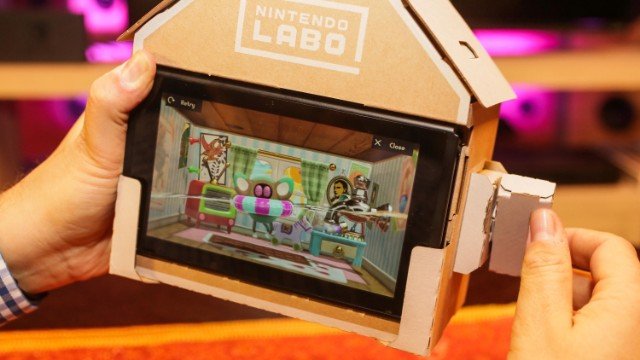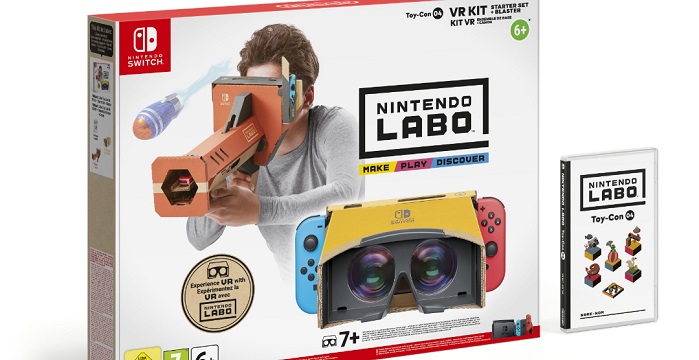Nintendo is home to some of the greatest game developers in the world and some of the craziest. Their bravery and boldness has changed the gaming and tech landscape — except for the times when it didn’t. Remember the Virtual Boy? Remember the Wii U? Not every bold new vision Nintendo puts on the market is a good idea, and there are reasons to be concerned about Nintendo Labo VR.
Nintendo’s cardboard crafting kit line has surprised and entertained gamers, for a brief period at least, but it’s by no means its biggest success story. The price of a box of cardboard is enough to put off plenty of would-be customers, along with concerns about the longevity of the product. All are very valid concerns, but when it comes to Nintendo Labo VR, there may bigger issues to worry about. Here are four of them.
Fragility

A traditional VR headset will strap on to your head while your hands are occupied with whatever controller you might be using, but of course, Nintendo Labo VR does things differently. Instead, these cardboard contraptions will have you holding the device to your face, with the bazooka and elephant ToyCon appearing to include a handle to hold.
Having these drop from head-height with the Nintendo Switch inside could be devastating for the ToyCon. The cardboard will likely protect the device from any harm, but the cardboard itself? Likely to not be so lucky.
On top of that, some of the ToyCons just look fragile. The bird and elephant ToyCon are, again, perfect examples. The bird has wings which probably won’t handle an unfortunate accident, and the elephant trunk it equally likely to get permanently damaged. We can hope accidents don’t befall our new cardboard accessories, but a bit of damage is pretty likely, unfortunately.
Screen door vision

Early prototype units of the Oculus Rift had a problem which became known as the “screen-door effect.” Essentially, your eyes were so close to the screen on the unit that you could easily see individual pixels in the display, and the gaps between them. This gave everything you saw with the device an unsightly grated look as if you were looking through a screen door, which explains the name.
The Nintendo Switch’s screen is 720p. That’s not up to par with other VR displays or even mobile phones, and with that low pixel density, it’s easy to imagine the screen door effect rearing its ugly head once again. This might be mitigated by having the Switch slightly farther away from the lenses you’ll peer through, but even then the low screen resolution might end up making for a very ugly game to play.
Limited-use VR

Every virtual, augmented and mixed reality device has multiple functions. Gaming is just the tip of the iceberg. Windows Mixed Reality has been a great platform for both gaming and 3D design. The HoloLens has also been used in engineering and manufacturing scenarios. Even when not being used for serious business, VR devices have the capability for education, or perhaps just watching 360-degree YouTube videos.
The Nintendo Labo VR looks to be severely lacking here. It shouldn’t necessarily run other popular VR games, but the games included with other Nintendo Labo kits have been fairly short. And if each VR experience is equal in length, then it might make for some very temporary fun.
A simple VR video app or just YouTube VR compatibility would work wonders for the longevity of the device. Sure, this can all already be done with Google Cardboard or any other VR headset for your phone, but if the VR experience is clear enough, this could be a great way to experience VR videos. Better than that would be compatibility with other Nintendo Switch games, of course.
Horsepower

Nintendo has not needed to compete with graphics for a long time. Its games do the talking instead. This is wonderful and has ensured Nintendo continue to innovate in the gaming space instead of copying what the competition is doing. But when it comes to VR, there’s a reason the premium headsets require a premium PC to power them.
VR is demanding. It requires rendering two perspectives on a world simultaneously, and with a high framerate to boot. In these kits, it’s clear that the Nintendo Switch is going to have to render the games while exclusively in the low-power handheld mode, which is worrisome. Can the system render a full 720p 60 frames per second gaming experience in VR? Well, it undoubtedly can, but a better question is whether they should.
With these limitations in place, cutbacks are going to have to be made in other places, and unlike when Xenoblade Chronicles 2 is being played in handheld mode, 360p resolution isn’t acceptable here. In order to be smooth and enjoyable, this needs to have a flawless framerate and the highest resolution it can possibly muster. Nintendo has surely done just that, but in order to believe it, we’ll need to see it.







